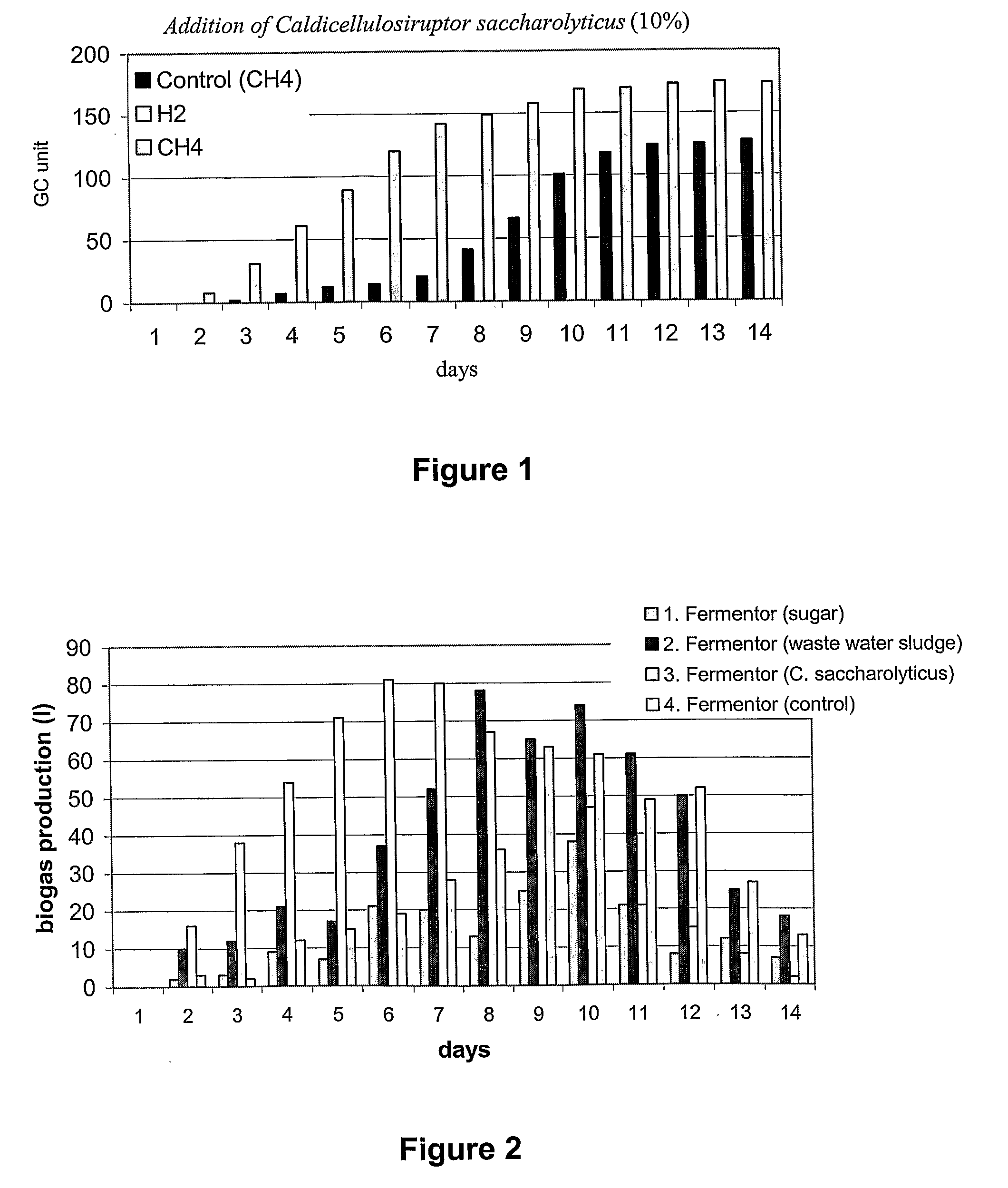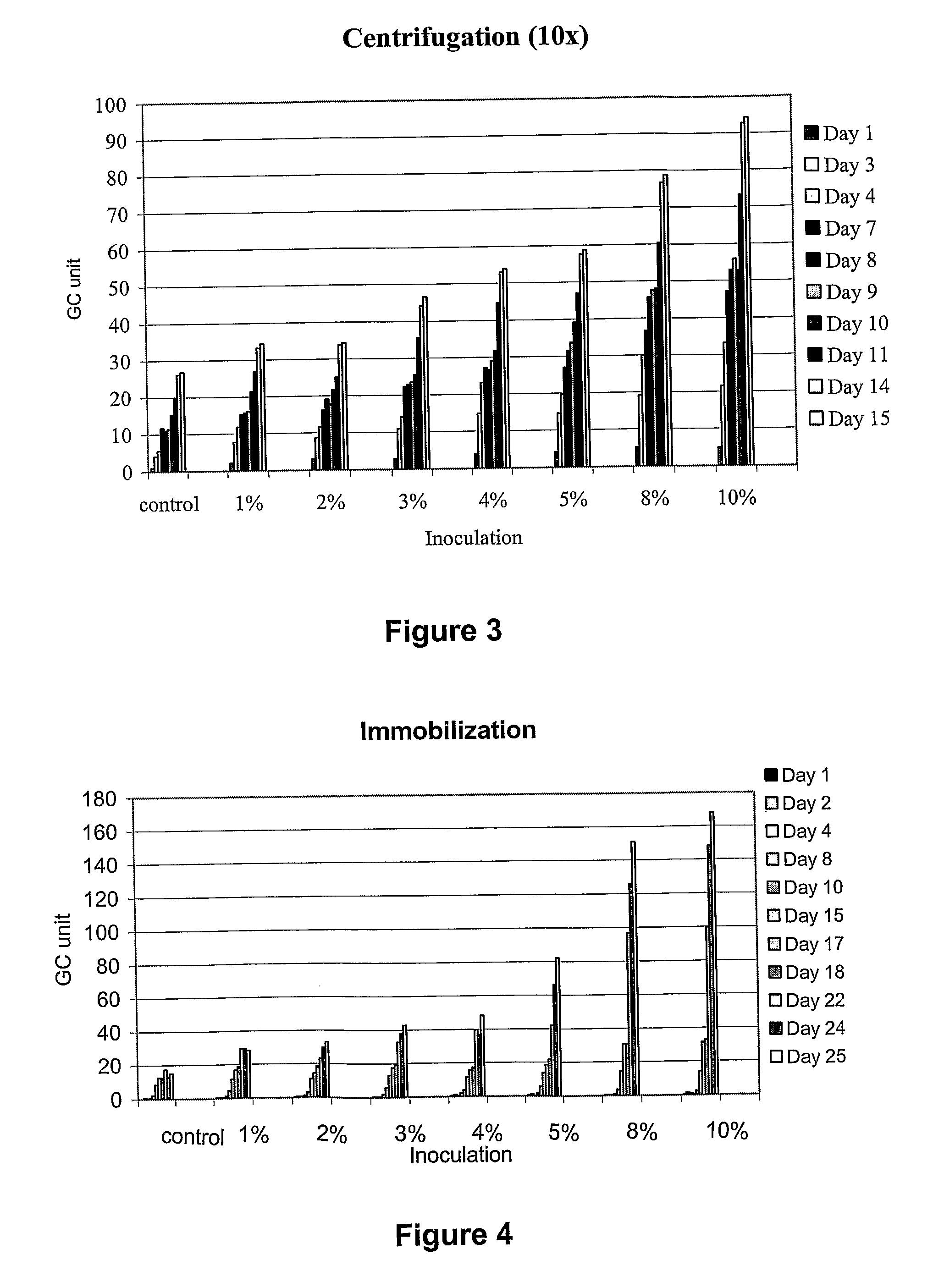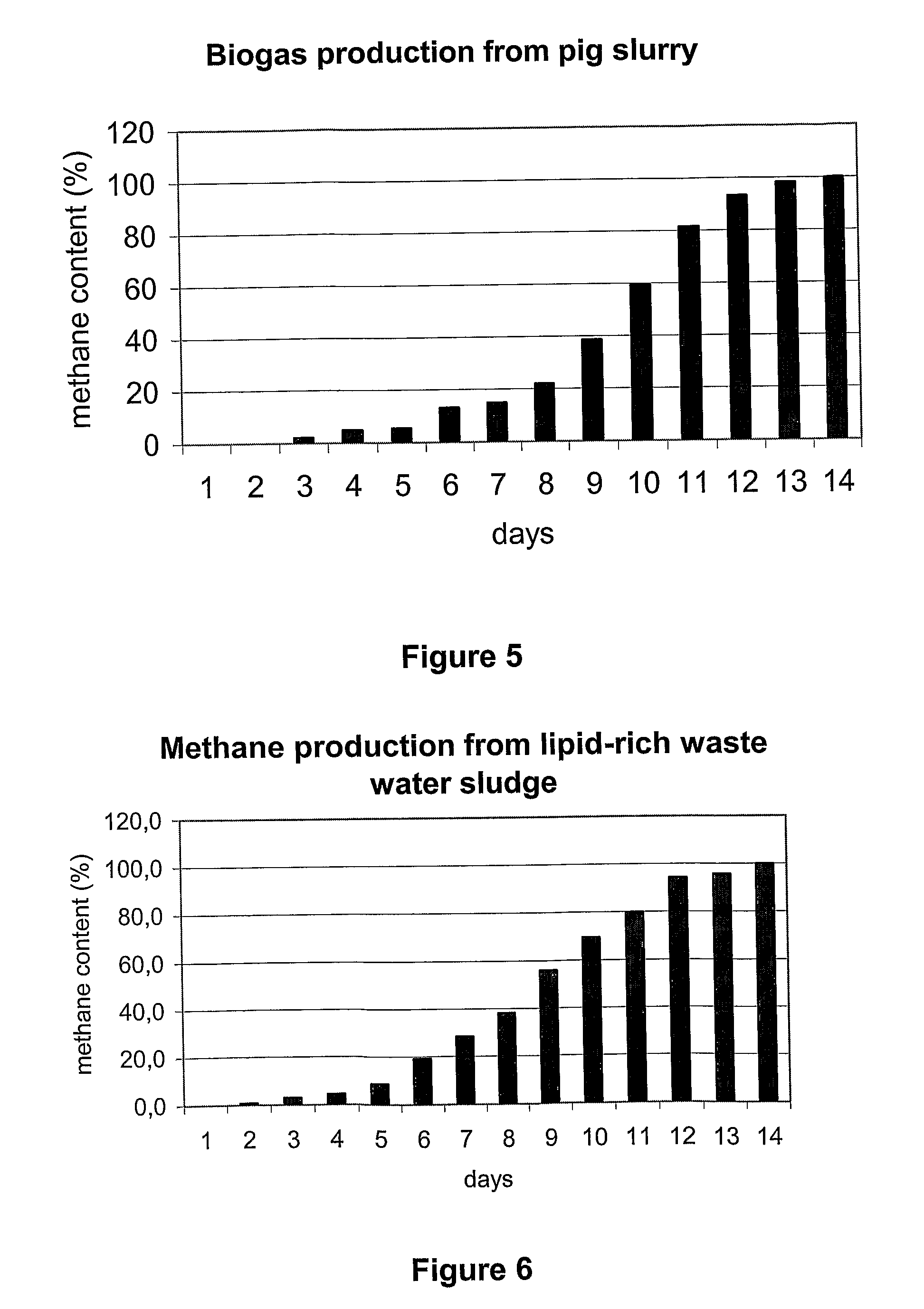Method for Increased Production of Biogas
a biogas and production method technology, applied in biochemistry apparatus and processes, water/sludge/sewage treatment, applications, etc., can solve the problems of low efficiency of the otherwise cheap and simple current one-fermenter system, inability to increase and inability to achieve sufficient reducing power, the effect of increasing the efficiency of thermophilic biogas production technology and enhancing the microbial activity of methane producers
- Summary
- Abstract
- Description
- Claims
- Application Information
AI Technical Summary
Benefits of technology
Problems solved by technology
Method used
Image
Examples
example 1
[0097]Selection and Testing of the Suitable Hydrogen Producing Bacterium
[0098]We have selected an anaerobic acetogenic bacterium that grows well between 45-70° C. and preferably at 50-60° C.
[0099]The hydrogen evolving activity of the selected strain(s) can be tested using the following method:
[0100]A direct method to measure hydrogen evolving activity uses gas chromatography. The bacteria are cultivated in a sealed 50-150 ml glass vessel in its preferred culture medium under anaerobic conditions. When the optical density of the culture reaches at least 0.4 / cm at 600 nm, a gas sample is removed anaerobically from the head space of the vessel and injected into the gas chromatograph directly. The hydrogen peak, which is identified by using a gas mixture of known composition, indicates the hydrogen evolving activity of the bacterium.
[0101]It is customary to screen several, independently cultivated bacterial stains and apply in the method of the invention the one displaying the highest h...
example 2
[0113]Preliminary Experiment to Produce Biogas from Pig Slurry
[0114]Pig slurry was used in this preliminary experiment. The slurry substrate was dispensed in 50 ml aliquots into glass vessels of 100 ml volume and sealed air tight. Some of the vessels were inoculated with 5 ml of pure culture of Caldicellulosiruptor saccharolyticus. The headspace was replaced with nitrogen gas. Incubation was carried out at 55° C. A gas sample was removed anaerobically from the head space every day and the gas was subjected to qualitative and quantitative analysis. The results are presented in FIG. 1.
[0115]The x axis of the graph indicates days after the start of the experiment, the y axis shows the amount of the biogas in GC units. When compared to the control samples, the inoculated ones clearly display that methane production starts faster and the overall biogas generation produces more gas than in the controls.
[0116]This example illustrates that biogas production rate is increased and the produce...
example 3
[0121]The dried biomass was used at various concentrations, in 1-10 V / V % range. The tests were carried out in sealed glass vessels of 100 ml volume. The experiments aimed to determine the intensification conditions using centrifuged bacteria (FIG. 3) and the same bacteria immobilized on rhyolitic tuff (perlite) (FIG. 4).
[0122]The example demonstrates that biogas production can be intensified even when the substrate is predominantly a low biogas yield, cellulose rich material, i.e. an energy grass. It has also been concluded that concentration of the bacteria by centrifugation and even more advantageously through immobilization on a cheap mineral carrier material may further improve biogas production. Several high specific surface carrier material can be used for immobilization of the hydrogen producing bacteria; perlite, a low cost and abundant material, is just one of them.
PUM
| Property | Measurement | Unit |
|---|---|---|
| temperature | aaaaa | aaaaa |
| optimal temperature | aaaaa | aaaaa |
| pH | aaaaa | aaaaa |
Abstract
Description
Claims
Application Information
 Login to View More
Login to View More - R&D
- Intellectual Property
- Life Sciences
- Materials
- Tech Scout
- Unparalleled Data Quality
- Higher Quality Content
- 60% Fewer Hallucinations
Browse by: Latest US Patents, China's latest patents, Technical Efficacy Thesaurus, Application Domain, Technology Topic, Popular Technical Reports.
© 2025 PatSnap. All rights reserved.Legal|Privacy policy|Modern Slavery Act Transparency Statement|Sitemap|About US| Contact US: help@patsnap.com



